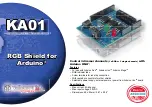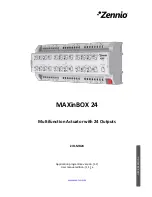
Rev. 1.20
�2
�an�a�� 2�� 201�
Rev. 1.20
��
�an�a�� 2�� 201�
BS82B12A-3/BS82C16A-3/BS82D20A-3
Touch Key 8-Bit Flash MCU with LED/LCD Driver
BS82B12A-3/BS82C16A-3/BS82D20A-3
Touch Key 8-Bit Flash MCU with LED/LCD Driver
Operating Mode Switching
The devices can switch between operating modes dynamically allowing the user to select the best
performance/power ratio for the present task in hand. In this way microcontroller operations that
do not require high performance can be executed using slower clocks thus requiring less operating
current and prolonging battery life in portable applications.
In simple terms, Mode Switching between the NORMAL Mode and SLOW Mode is executed
using the HLCLK bit and CKS2~CKS0 bits in the SMOD register while Mode Switching from the
NORMAL/SLOW Modes to the SLEEP/IDLE Modes is executed via the HALT instruction. When
a HALT instruction is executed, whether the devices enter the IDLE Mode or the SLEEP Mode is
determined by the condition of the IDLEN bit in the SMOD register and FSYSON in the CTRL
register.
When the HLCLK bit switches to a low level, which implies that clock source is switched from the
high speed clock source, f
H
, to the clock source, f
H
/2~f
H
/64 or f
S
UB
. If the clock is from the f
S
UB
, the
high speed clock source will stop running to conserve power. When this happens it must be noted
that the f
H
/16 and f
H
/64 internal clock sources will also stop running
.
The accompanying flowchart
shows what happens when the devices move between the various operating modes.
NORMAL Mode to SLOW Mode Switching
When running in the NORMAL Mode, which uses the high speed system oscillator, and therefore
consumes more power, the system clock can switch to run in the SLOW Mode by clearing the
HLCLK bit to zero and set
ting
the CKS2~CKS0 bits to "000" or "001" in the SMOD register.This
will then use the low speed system oscillator which will consume less power. Users may decide to
do this for certain operations which do not require high performance and can subsequently reduce
power consumption.
The SLOW Mode is sourced from the LXT or LIRC oscillator and therefore requires these
oscillators to be stable before full mode switching occurs. This is monitored using the LTO bit in the
SMOD register.
















































